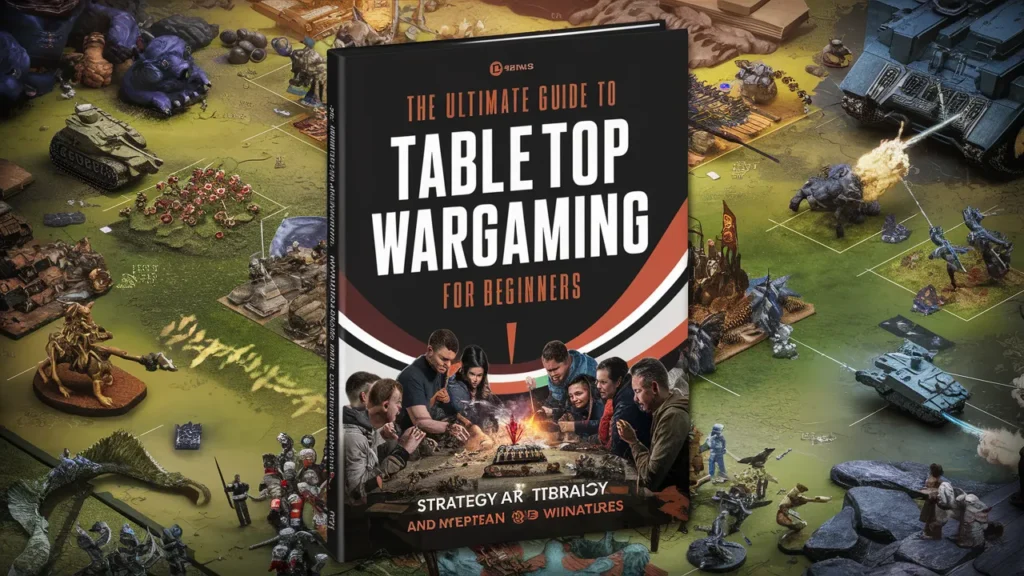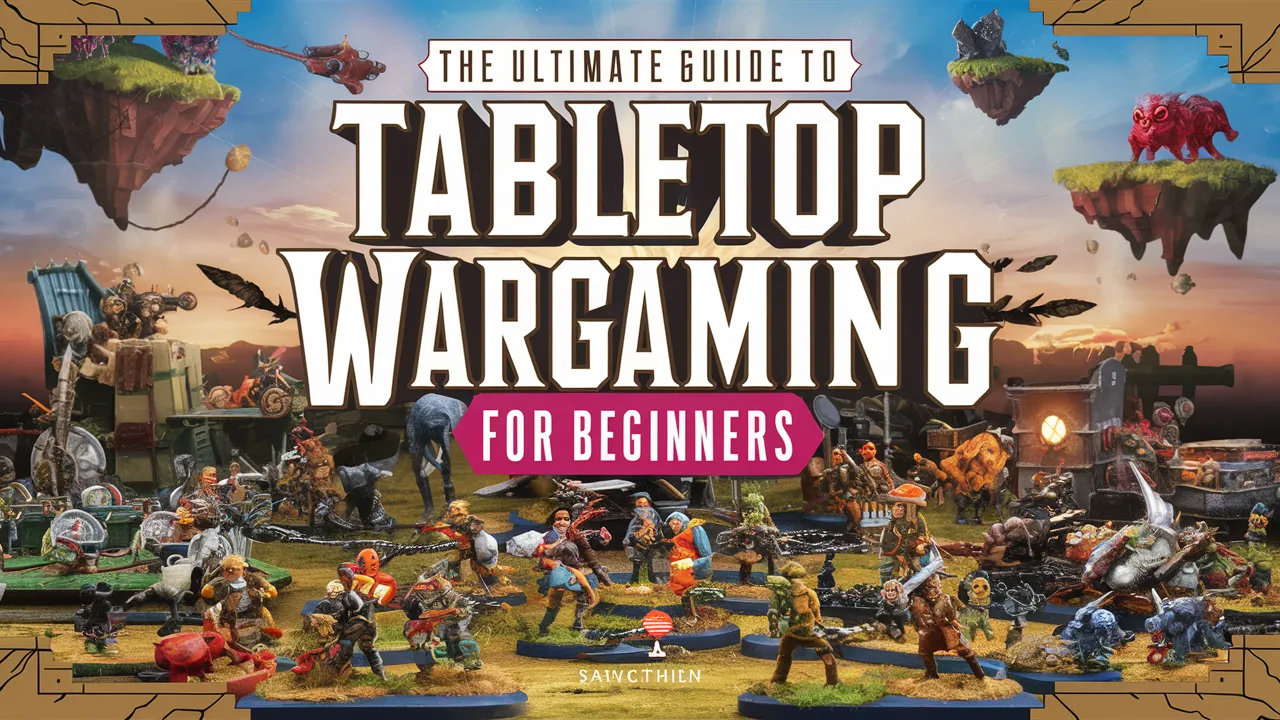Introduction
Tabletop wargaming is an enthralling hobby that combines creativity, strategy, and social interaction. This guide is designed for beginners who are looking to understand the fundamentals of this engaging pastime and learn how to get started effectively.
Understanding Tabletop Wargaming
What is Tabletop Wargaming?
Tabletop wargaming is a strategic game played on a flat surface where players control miniature figures representing warriors, vehicles, or fantastical creatures. These games often simulate battles and conflicts from historical, science fiction, or fantasy settings, requiring players to formulate tactics and strategy to defeat their opponents.
Games typically involve a set of rules that dictate gameplay, including movement, combat, and victory conditions. While games can be played solo or cooperatively, most are competitive, making them a great social activity.
In addition to the core mechanics, many tabletop wargames incorporate elements of role-playing, allowing players to develop their characters and narratives over time. This aspect can lead to a deeper investment in the game, as players may find themselves emotionally attached to their armies and the stories that unfold during gameplay. The combination of strategy and storytelling creates a rich tapestry that keeps players returning to the gaming table, eager to see how their choices will affect the outcome of future battles.
The Appeal of Tabletop Wargaming
The allure of tabletop wargaming lies in its combination of artistic expression and strategic thinking. Players are drawn not just to the competition but also to the opportunity to create and customize their own miniature armies and vibrant battlefields.
Moreover, it fosters a sense of community. Enthusiasts often gather to play, share techniques, and discuss game lore. This interactive element makes it a more engaging experience than many solitary hobbies.
Additionally, the hobby aspect of painting and assembling miniatures adds another layer of enjoyment. Many players take pride in meticulously crafting their figures, often spending hours perfecting paint jobs and detailing. This artistic endeavor not only enhances the visual appeal of the game but also allows players to express their individuality and creativity. Events like painting competitions and themed tournaments further enrich the community experience, as players showcase their skills and share tips, creating an environment of camaraderie and friendly rivalry.
Getting Started with Tabletop Wargaming
Choosing Your First Game
For beginners, selecting the right game is crucial. Start with a game that has a manageable set of rules and offers a balanced experience. Popular choices for newbies include:
- Warhammer 40,000: A sci-fi classic known for its expansive universe.
- Age of Sigmar: A fantasy counterpart with simpler mechanics.
- Infinity: A fast-paced tactical game set in a futuristic world.
Consider looking for starter sets, which often include everything you need to begin playing, including miniatures and initial rulebooks.
Understanding Game Mechanics
Familiarizing yourself with the game mechanics is essential for a smooth start. Each game has unique systems for movement, shooting, melee combat, and special abilities. Take the time to read the rulebook carefully, and don’t hesitate to look for online tutorials or community forums that explain the basics.
Playing a few practice games with experienced players can also significantly enhance your understanding. Observing how others strategize can offer valuable insights into gameplay and fortify your comprehension of the rules.

Essential Tools for Tabletop Wargaming
Miniatures and Models
Miniatures are the heart of tabletop wargaming. Fun, detailed models add character and immersion to the game. When starting, invest in a starter army that intrigues you. Selecting a faction that resonates with your interests and aesthetic preferences is vital.
Remember, you can always expand your collection as you progress. Customizing and painting your miniatures according to your vision will enhance your engagement with the game.
Terrain and Scenery
Terrain plays a significant role in tabletop wargaming, as it can affect gameplay mechanics and create immersive battlefields. You can buy pre-made terrain pieces, but crafting your own can be incredibly rewarding.
Common terrain types include hills, forests, ruins, and buildings. Use materials like foam board, cardboard, and paints to bring your battlefield to life, enhancing the visual experience and making every game unique.
Dice and Measuring Tools
Dice are integral to the game as they determine outcomes of actions, affecting the randomness that wargaming provides. Different games may require various types of dice (commonly d6, d10, or d20), so make sure you have the dice specific to your chosen game.
Measuring tools, like tape measures or templates, are also essential, as they help in calculating distances for movement and range. Most players carry a measuring tape along with their miniatures for convenience.
Read More: Best New Indie RPGs on Xbox You Need to Pla
Rules and Strategies of Tabletop Wargaming
Learning the Rules
Mastering the rules is foundational to improving your gameplay. Start by reading the rulebook and focusing on the key mechanics of your chosen game. Many games also provide quick-start guides to ease your understanding.
It can be beneficial to watch actual gameplay videos or tutorials where experienced players explain strategies and rules in action. This visual learning can reinforce your understanding and make it easier to absorb complex concepts.
Developing Winning Strategies
Once you understand the basic mechanics and rules, developing a winning strategy is next. Focus on the strengths and weaknesses of your army. Consider how terrain can be utilized to your advantage and how to outmaneuver your opponent.
Practice is key. The more games you play, the better you’ll become at anticipating opponents’ strategies and countering them effectively. Engage with the community for tips, insights, and to learn from seasoned players.
Building and Painting Your Miniatures
Assembling Your Miniatures
Assembly is the first step in bringing your miniatures to life. Many miniatures come in multiple pieces, requiring glue and precision to assemble. Follow the instructions provided, and don’t rush the process. Proper assembly not only enhances the aesthetic but also increases durability during gameplay.
Painting Techniques for Beginners
Painting your miniatures is an art that allows you to personalize your army. Start with basic techniques like base coating, washing, and dry brushing. Use quality paints and brushes to get the best results.
Consider watching tutorials on painting methods or joining local clubs or online communities where you can learn and share painting tips. The more you practice, the better you’ll get at it, and soon your custom-painted miniatures will be a point of pride during your games.
With this guide, you are now equipped to dive into the world of tabletop wargaming. Embrace the journey, and let your strategic and creative talents shine as you engage with this fantastic hobby!
Conclusion
Tabletop wargames offer a rich blend of strategy, creativity, and social interaction, making them a highly engaging hobby for both beginners and seasoned players. Whether you’re drawn to painting miniatures, crafting tactical battle plans, or immersing yourself in expansive fantasy or historical worlds, the appeal of tabletop wargaming lies in its depth and flexibility. With a wide variety of games and communities available, there’s always something new to discover and enjoy. So, gather your miniatures, set up your terrain, and dive into the thrilling world of tabletop warfare!

Leave a Reply